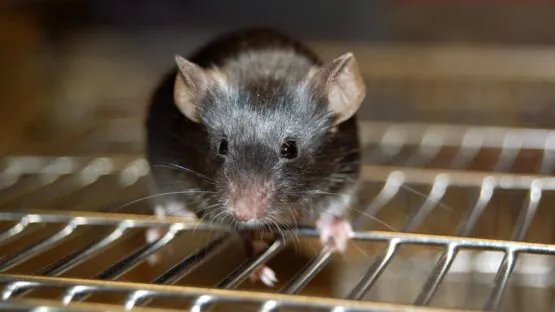Researchers have discovered that exosomes secreted by mesenchymal stem cells derived from human umbilical cord tissue (hucMSC-Exos) restore muscle function in a mouse model of sarcopenia.
Useful messengers
Exosomes are vesicles that carry molecular messages from cell to cell. When derived from youthful sources, they have been repeatedly found to have benefits in multiple animal models. For example, they restore bone in monkeys, restore function to heart tissue in mice, and have even been reported to extend lifespan in a different mouse experiment.
Exosomes used in such experiments are normally derived from stem cells, particularly mesenchymal stromal cells (MSCs). In many cases, MSCs themselves are used as the therapy, and this approach has been used to regenerate muscles in pigs [1]. As these cells proliferate particularly quickly when derived from human umbilical cord tissue, hucMSCs have become preferable in newer experiments [2].
Directly applying stem cells, however, is a practice that carries its own immunological concerns when the cells are derived from sources outside the treated patient. Exosomes do not trigger the same immune reaction. This work published in Stem Cell Research & Therapy, therefore, looked to see if muscles can be restored in a model of sarcopenia through exosomes alone.
Encouraging muscle cells to form muscle tissue
The researchers first evaluated the hucMSC-Exos themselves. Unlike other experiments, this work used exosomes as a whole rather than a subset based on size. The majority of these exosomes were between 100 to 200 nanometers in diameter, with others being somewhat larger.
These exosomes were found to have benefits in C2C12 cells, immortalized muscle-generating cells (myoblasts) derived from mice. As expected, exposing these cells to 400 micromoles of hydrogen peroxide decreased their viability, causing death by apoptosis. Exposing these cells to exosomes alongside the hydrogen peroxide, however, restored a significant portion of their viability. Similar results were found when exposing these cells to doxorubicin, which induces senescence; fewer cells became senescent when also exposed to hucMSC-Exos.
Additionally, as the researchers expected, exposing C2C12 cells to hucMSC-Exos encouraged differentiation into myotubes, suggesting that these exosomes encourage these cells to fulfill their function of muscle generation. These results were accompanied by an increase in mTOR and other compounds related to the mTOR pathway along with an increase in myogenin and other factors related to muscle differentiation and growth.
Interestingly, however, the well-known longevity drug rapamycin, which suppresses mTOR, is in opposition to at least some of these exosomes’ effects. Administering rapamycin alongside hucMSC-Exos effectively nullified the increase in mTOR that they would have caused. This paper did not include a direct test of whether or not rapamycin has negative effects on myogenin or related compounds, although previous work suggests that mTOR activity and muscle growth are strongly related [3] and rapamycin has been found to prevent exercise-induced muscle growth in people [4].
Strength increases in model mice
Further experiments used SAMP10 mice, which get sarcopenia-like symptoms relatively early in life. Ten of these mice were given 20 micrograms of hucMSC-Exos, and another ten were left as controls. At 24 weeks of age, when the researchers began measurements, the two groups were similar in body weight and in endurance capability; two months later, however, they strongly diverged, with the treated group having significant advantages in muscle mass, endurance, and grip strength compared to the control group. Despite the muscle mass of the treated group being over a quarter larger than the control group, there were no differences in body weight between the two groups.
These benefits were confirmed at the molecular level. As in the cellular experiment, the treated mice had higher levels of Sirt1 along with p-mTOR. The numbers of damaged mitochondria were significantly reduced in the treated mice.
This was a relatively limited study, and the researchers acknowledge its limitations. In particular, they could not use a fluorescent protein to determine how much of the hucMSC-Exos were being taken up by the muscle tissue, and they could not directly observe the exosomes’ effects on the mice’s stem cells. Additionally, this study used a mouse model rather than naturally aged mice. Further work will have to be done to determine if hucMSC-Exos, or any components of these exosomes, are effective against sarcopenia in other organisms.
Literature
[1] Linard, C., Brachet, M., L’homme, B., Strup-Perrot, C., Busson, E., Bonneau, M., … & Benderitter, M. (2018). Long-term effectiveness of local BM-MSCs for skeletal muscle regeneration: a proof of concept obtained on a pig model of severe radiation burn. Stem cell research & therapy, 9(1), 299.
[2] Hori, A., Takahashi, A., Miharu, Y., Yamaguchi, S., Sugita, M., Mukai, T., … & Nagamura-Inoue, T. (2024). Superior migration ability of umbilical cord-derived mesenchymal stromal cells (MSCs) toward activated lymphocytes in comparison with those of bone marrow and adipose-derived MSCs. Frontiers in Cell and Developmental Biology, 12, 1329218.
[3] Meng, X., Huang, Z., Inoue, A., Wang, H., Wan, Y., Yue, X., … & Cheng, X. W. (2022). Cathepsin K activity controls cachexia‐induced muscle atrophy via the modulation of IRS1 ubiquitination. Journal of Cachexia, Sarcopenia and Muscle, 13(2), 1197-1209.
[4] Drummond, M. J., Fry, C. S., Glynn, E. L., Dreyer, H. C., Dhanani, S., Timmerman, K. L., … & Rasmussen, B. B. (2009). Rapamycin administration in humans blocks the contraction‐induced increase in skeletal muscle protein synthesis. The Journal of physiology, 587(7), 1535-1546.


